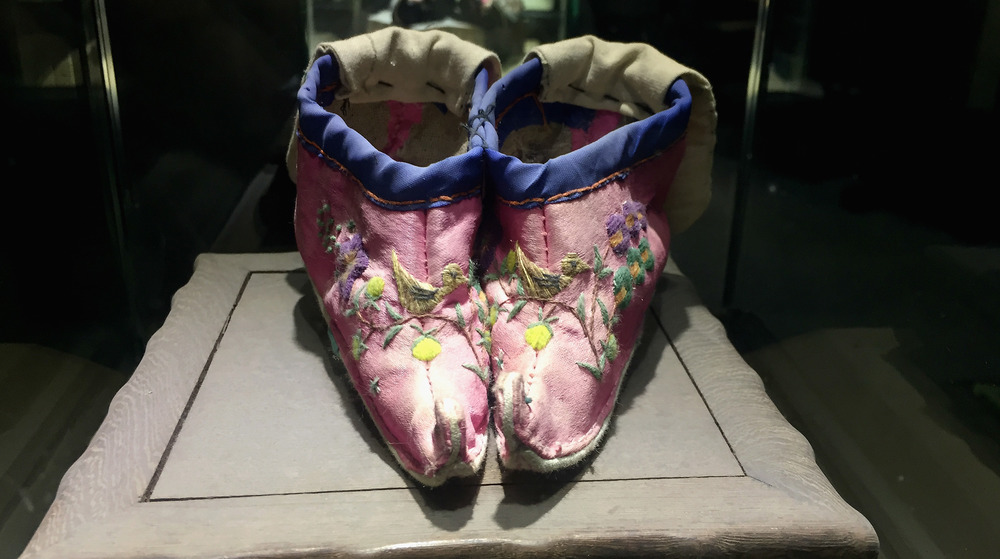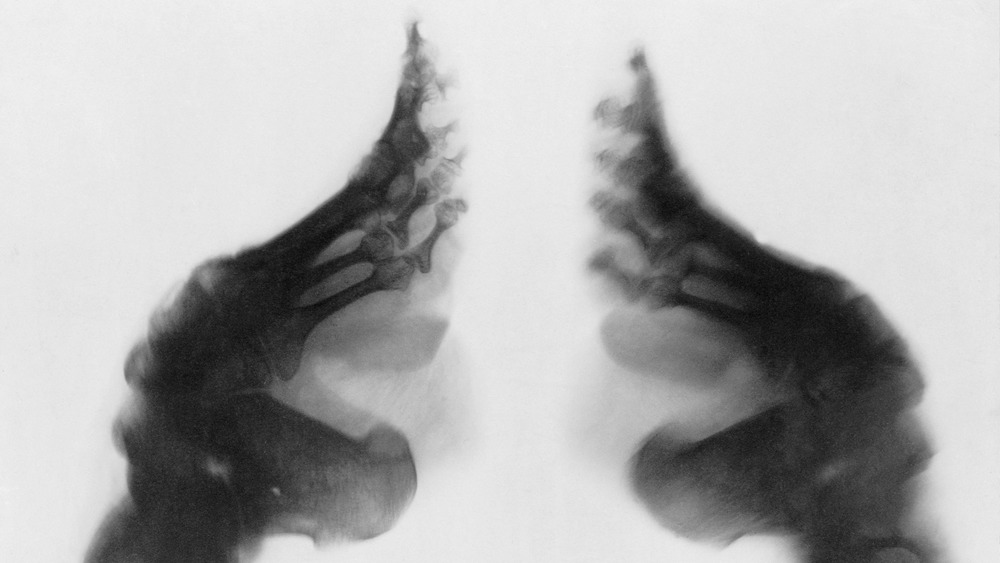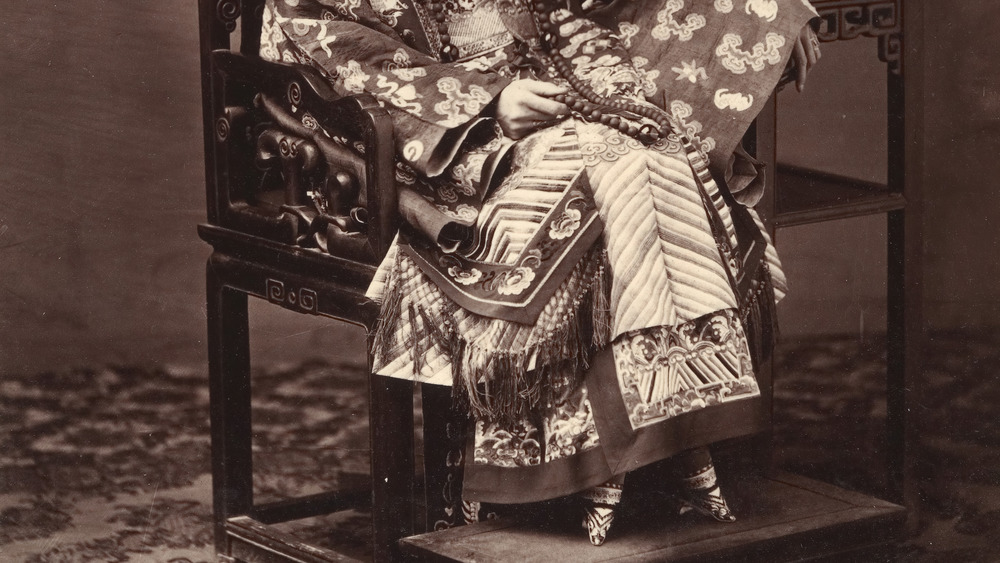The Truth About The Ancient Tradition Of Chinese Footbinding
If you thought putting on make-up, squeezing into shapewear, and tangling with your hair just for a night out was terrible, then you're not going to like what they were doing in ancient China.
Women in ancient China, beginning in the Tang Dynasty (618-907 CE) up until the early 20th century, bound their feet as a means to attract better marriage prospects. This made their feet incredibly small, but it also meant their feet become gnarled, broken, and painful.
Foot binding is the act of forcing one's foot into a smaller size. This usually entails breaking of toes to prevent the feet from growing and bending them towards the heel, reported NPR. Only the big toe is unbroken. Traditionally done beginning between five and eight years old (youthful bones are more pliable), the feet are then wrapped very tightly with a bandage that's 10 feet long. Most women with bound feet come from wealthy families, as tiny feet were seen as a means to attract a husband of equal or higher standing.
According to the Ancient History Encyclopedia, there's a whole ritual involved in foot binding. The family chooses an auspicious day to start the biding, then offers prayers to the Tiny-Footed Maiden Goddess and the Buddhist deity Guanyin. And then the whole thing begins, with an older female family member or a professional foot binder. After a month, the bindings are undone to treat any lesions, and then rebound again.
The pain was intense
The bindings are loosened and tightened yearly. Called Lotus Women, their feet were only three to four inches big. It's not clear when exactly foot binding as practice began. One possibility is that it may have started with the dancer Yaoniang in the 10th century CE. It became popular in the Song dynasty (960-1279 CE), first to differentiate rich girls from others, and soon spread to all classes, in hopes of attracting a good husband. Even if a girl's family did not particularly want to bind their daughter's feet, societal pressures often forced them to do so. Small feet became a symbol of beauty and status, especially for the Han Chinese. There are also stories that foot binding began because the empress of the Shang dynasty had a club foot, and she demanded all other women have small feet too.
Either way, foot binding was a national custom. By the 19th century, 40-50 percent of women had bound feet. In the upper classes, the figure was almost 100 percent. Several emperors tried to ban foot binding over the centuries, but it often didn't stick. China officially made the practice illegal in 1912, said NPR, though many families continued secretly to bind feet. By 1915, the government levied fines for anyone caught practicing foot binding. But it wasn't until the Communist government came to power in the late 1940s that the practice fell out of favor.
It created medical issues
This did not mean women with bound feet were exempt from work. In the Communist era, they still had to till the fields, even though they had difficulty walking.
Very few women with bound feet survive in China today. Those who are still around ended up unable to venture very far from home. The Atlantic wrote many women suffered hip issues. They often had lower bone density in their hips and lower backs, rendering them almost unable to get up and out of chairs in their old age. Even women who were able to work in the fields continued to suffer from pain in their feet. Their misshapen feet also prevented them from going up to the mountains to gather food for their families.
It's mostly understood now that foot binding was a means of keeping women in their place. And like corsets worn in the Western world, it meant women purposefully put themselves in pain to attract a man, making themselves smaller to fit some sort of societal ideal. It meant their physical mobility was limited, so they stayed closer to home. That it was often other women that perpetuated the practice makes it even sadder.
While foot binding and daily corset wearing have largely fallen out of favor, it's still a reminder that sometimes, suffering for beauty results in more physical pain. Remember that the next time you put on your high heels. At least you're doing it because you want to.


